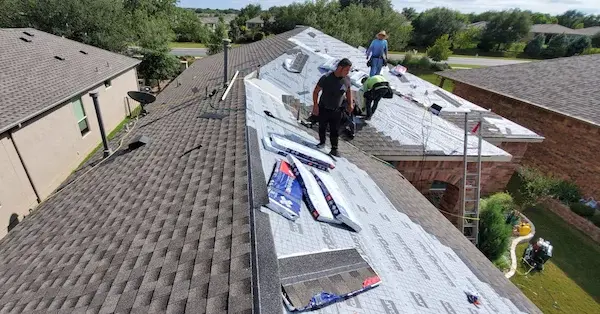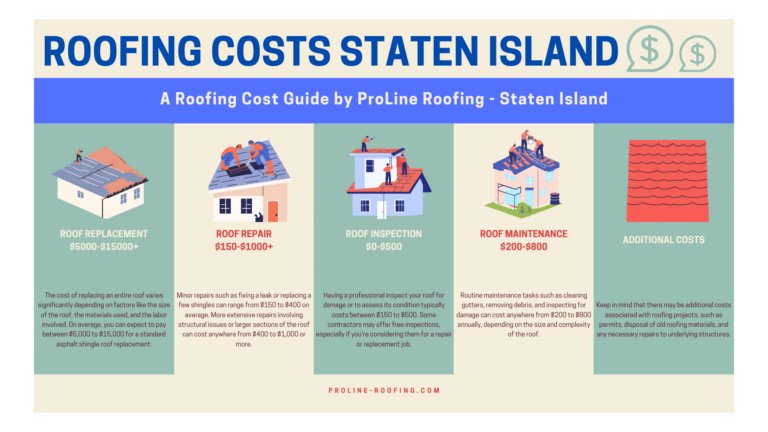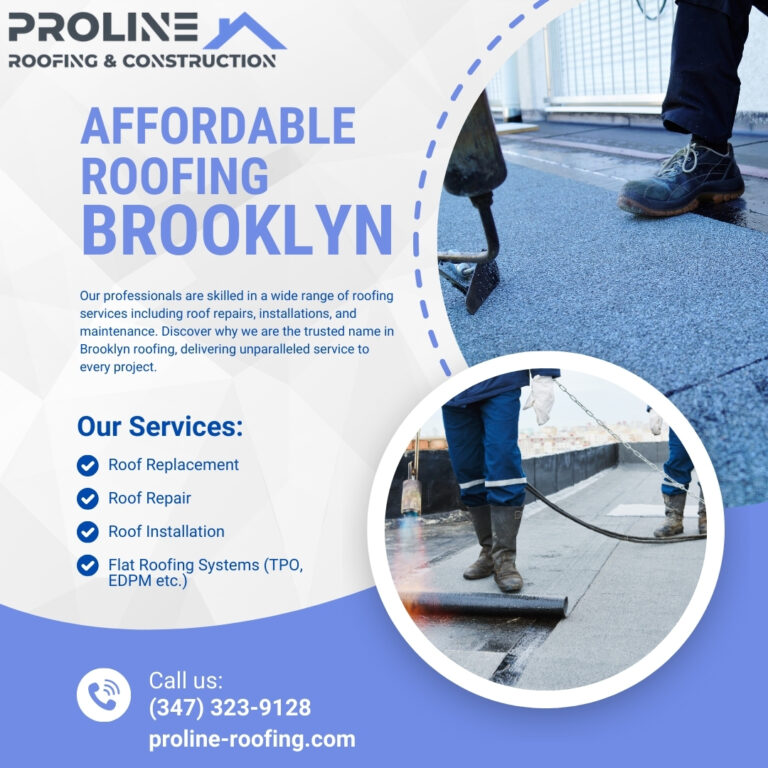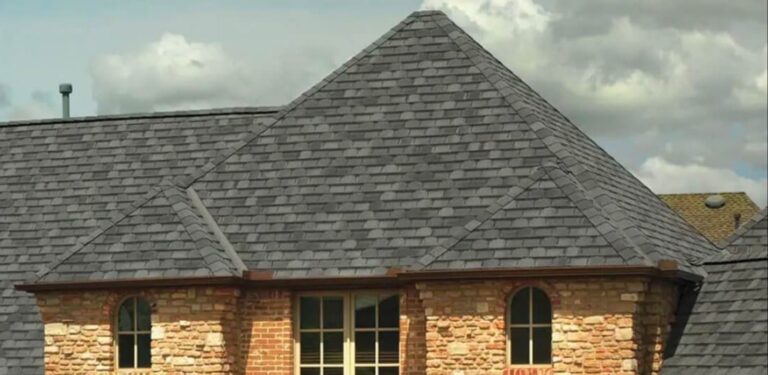Your roof is one of the most critical components of your home, protecting you and your family from the elements. In the bustling metropolitan areas of Staten Island, Brooklyn, and New Jersey, where weather conditions can be unpredictable and harsh, having a durable and long-lasting roof is paramount. However, many homeowners find themselves asking the age-old question: “How long do roofs last?“
The lifespan of a roof is influenced by a multitude of factors, from the roofing material itself to the quality of installation, climate conditions, and maintenance practices. Understanding these factors can empower homeowners in Staten Island, Brooklyn, and New Jersey to make informed decisions about their roofing needs, ensuring their homes remain safe, energy-efficient, and visually appealing for years to come.
5 Factors Affecting Roof Lifespan
The longevity of a roof is influenced by several key factors, each playing a crucial role in determining its overall durability and performance. Understanding these factors can help homeowners in Staten Island, Brooklyn, and New Jersey make informed decisions when it comes to selecting the appropriate roofing material, roofing contractor and maintaining their investment.
Roofing Material
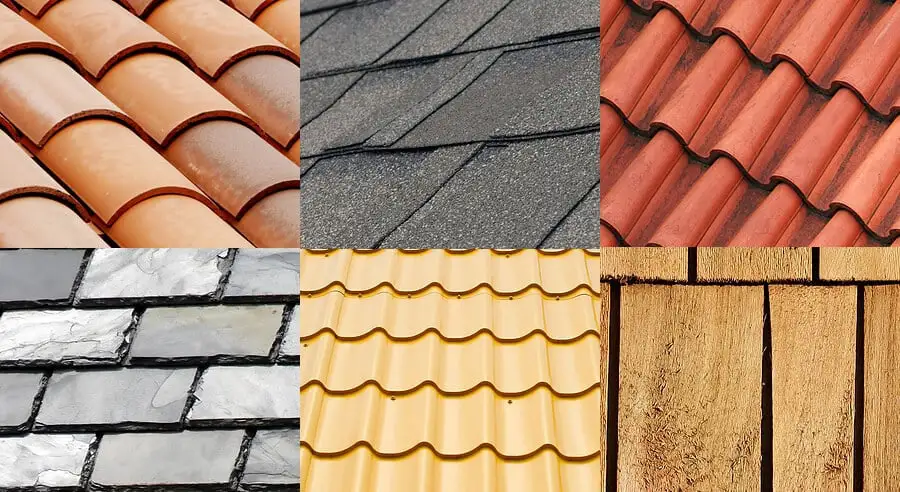
The type of roofing material chosen has a significant impact on its lifespan. Different materials have varying degrees of resistance to the elements and can withstand different levels of wear and tear. Common roofing materials include:
- Asphalt Shingles: One of the most popular and affordable options, asphalt shingles typically last between 15 to 30 years, depending on the quality and installation.
- Metal Roofing: Known for its durability and long lifespan, metal roofing can last anywhere from 40 to 70 years with proper maintenance.
- Tile Roofing: Clay or concrete tiles are highly resistant to weather and can provide a lifespan of 50 to 100 years, making them a popular choice in areas with harsh climates.
- Flat Roofing: Often used in commercial and industrial buildings, as well as some residential properties, flat roofing systems like TPO or EPDM have a typical lifespan of 10 to 20 years.
Quality of Installation
Proper installation is crucial for ensuring the longevity of a roof. Even the highest quality roofing materials can fail prematurely if not installed correctly by experienced professionals. Improper underlayment, flashing, and ventilation can lead to premature deterioration and leaks.
Climate and Weather Conditions
The local climate and weather patterns play a significant role in determining a roof’s lifespan. Areas with extreme temperatures, high humidity, heavy snowfall, or frequent storms can accelerate the aging process of roofing materials. Additionally, prolonged exposure to UV rays from the sun can cause certain materials to degrade faster.
Roof Slope and Ventilation
The slope of a roof affects its ability to shed water and debris effectively. Steeper slopes generally have better drainage, reducing the risk of water ponding and subsequent damage. Proper ventilation is also crucial, as it helps regulate the temperature and moisture levels in the attic space, preventing premature deterioration of the roofing materials.
Maintenance and Inspections
Regular maintenance and inspections are essential for extending the lifespan of a roof. Clearing debris, trimming overhanging branches, and addressing minor repairs promptly can prevent small issues from escalating into major problems. Professional roof inspections can also identify potential issues before they become costly and highlight areas that may need attention.
Average Lifespan by Roofing Material
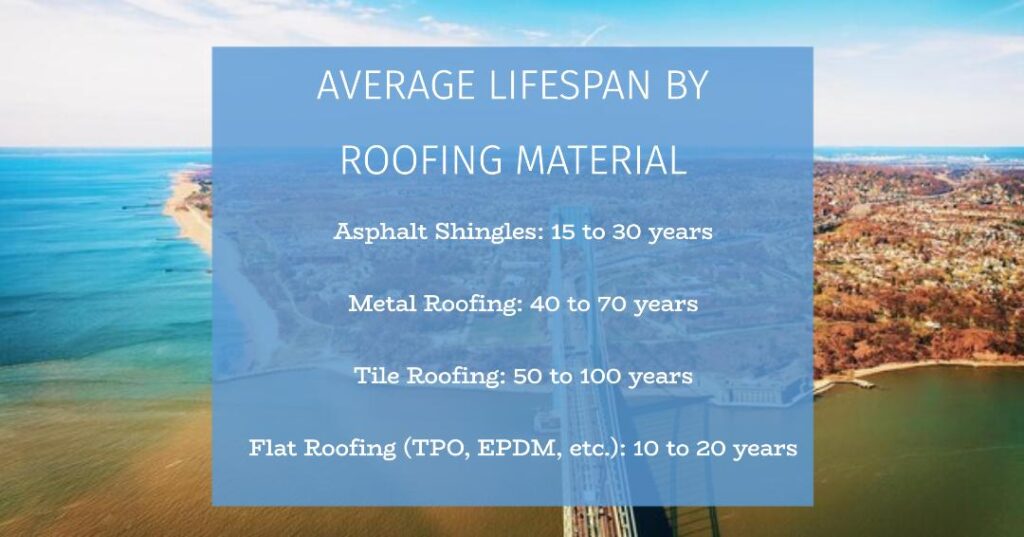
While the factors mentioned above can influence a roof’s longevity, different roofing materials have varying expected lifespans under normal conditions:
- Asphalt Shingles: 15 to 30 years
- Metal Roofing: 40 to 70 years
- Tile Roofing: 50 to 100 years
- Flat Roofing (TPO, EPDM, etc.): 10 to 20 years
It’s important to note that these are general estimates, and the actual lifespan of a roof can vary significantly based on the specific conditions and maintenance practices in New York City and New Jersey area.
Signs of Roof Aging and Potential Replacement
Even with the best maintenance practices, no roof lasts forever. Over time, various signs of aging and deterioration may become apparent, indicating the need for a potential roof replacement. Here are some common signs to watch out for:
a. Curled or buckled shingles: As shingles age, they can lose their flexibility and become brittle, leading to curling, buckling, or cracking. This compromises their ability to protect the underlying structure and can allow water to seep through.
b. Granule loss and bald spots: Asphalt shingles are coated with granules that protect the underlying materials from UV radiation. When these granules start to come loose or bald spots appear, it’s a sign that the shingles are nearing the end of their lifespan.
c. Leaks and water damage: Water stains on ceilings or walls, musty odors, and mold growth are clear indicators of leaks in the roofing system. These issues should be addressed promptly to prevent further damage and potential structural issues.
d. Sagging or structural issues: If you notice visible sagging or deformities in the roof’s structure, it may be a sign of more significant underlying problems that could compromise the integrity and safety of your home.
Importance of Regular Roof Maintenance
Regular roof maintenance is crucial for prolonging the lifespan of your roof and avoiding costly repairs or premature replacements. Here are some key maintenance practices to keep in mind:
a. Annual inspections: It’s recommended to have your roof professionally inspected at least once a year. Experienced roofers can identify potential issues and recommend appropriate repairs or maintenance tasks.
b. Cleaning and debris removal: Leaves, branches, and other debris can accumulate on your roof, trapping moisture and promoting the growth of algae or moss. Regular cleaning helps maintain proper drainage and prevents premature deterioration.
c. Addressing minor repairs promptly: Small issues like missing or damaged shingles, flashing problems, or clogged gutters should be addressed promptly. Neglecting these minor repairs can lead to more extensive and costly damage down the line.
d. Impact on roof longevity and cost savings: Proper maintenance not only extends the lifespan of your roof but also saves you money in the long run by avoiding the need for premature replacements or costly repairs.
When to Consider Roof Replacement
While regular maintenance can prolong the life of your roof, there may come a time when a complete replacement is necessary. Here are some situations where you should consider a roof replacement:
1. Age of the roof: If your roof is approaching or has exceeded its expected lifespan, it may be time to consider a replacement, even if no visible signs of damage are present.
2. Extent of damage or deterioration: If your roof has sustained significant damage or deterioration beyond the scope of repairs, a full replacement may be the most cost-effective and practical solution.
3. Energy efficiency and cost-effectiveness: Outdated or inefficient roofing materials can lead to higher energy costs and reduced comfort. Upgrading to newer, more energy-efficient options can potentially save you money in the long run and improve the overall value of your home.
4. Enhancing curb appeal and home value: A new roof can significantly enhance the curb appeal and overall value of your home, making it a worthwhile investment if you plan to sell in the near future.
Choosing the Right Roofing Contractor
When it comes to roof maintenance, repairs, or replacement, choosing the right roofing contractor is crucial. A reputable and experienced contractor can ensure that the job is done correctly, using high-quality materials and adhering to industry best practices. Here are some key factors to consider when selecting a roofing contractor:
Licensing and insurance: Make sure the contractor you choose is properly licensed and insured. This protects you from liability in case of accidents or damages during the roofing project.
Experience and reputation: Look for a roofing contractor with extensive experience and a solid reputation in the Staten Island, Brooklyn, and New Jersey areas. ProLine Roofing has been serving the region for years, establishing itself as a trusted name in the industry.
Warranty and guarantees: A reputable contractor should offer warranties and guarantees on their workmanship and the materials used. This provides you with added peace of mind and protection for your investment.
Customer reviews and testimonials: Read online reviews and testimonials from previous customers to gauge the contractor’s level of professionalism, quality of work, and customer satisfaction.
By partnering with ProLine Roofing, you can rest assured that your roofing project is in capable hands. Our team of experienced professionals is dedicated to delivering exceptional results, using only the highest-quality materials and adhering to industry best practices.
TL;DR
Your roof is one of the most critical components of your home, protecting you and your family from the elements. In the diverse climate conditions of NYC and NJ, understanding the factors that influence roof lifespan is essential for making informed decisions about maintenance, repairs, and replacements.
From the type of roofing material and the quality of installation to the local weather patterns and regular maintenance practices, each aspect plays a role in determining how long your roof will last. By staying vigilant for signs of aging and deterioration, such as curled shingles, granule loss, leaks, or structural issues, you can take proactive measures to address potential problems before they escalate.
Regular roof maintenance, including annual inspections, cleaning, and addressing minor repairs promptly, is crucial for extending the lifespan of your roof and avoiding costly replacements. When the time does come for a new roof, factors such as energy efficiency, curb appeal, and the overall value of your home should be considered.
Throughout this process, choosing the right roofing contractor can make all the difference. ProLine Roofing, with its wealth of experience and expertise in the Staten Island, Brooklyn, and New Jersey areas, is committed to delivering exceptional results and ensuring your peace of mind.
Don’t wait until it’s too late – contact ProLine Roofing today for professional roof inspections, repairs, maintenance, and high-quality replacements & installations. Our team of experts will guide you through the process, ensuring that your roof provides reliable protection and long-lasting performance for years to come.

